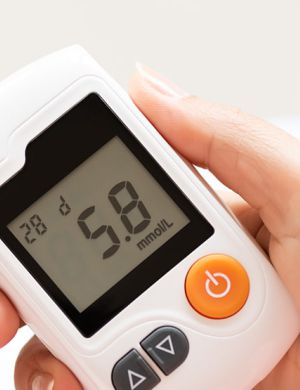
Medical Devices – USA/Europe Regulatory Updates round up – Oct 2021
EUROPE
1. MDCG 2021-26 – Q&A on repackaging & relabelling activities under Article 16 of Regulation (EU) 2017/745 and Regulation (EU) 2017/746
This document presents questions and answers about obligations introduced by Article 16(2) to (4) under Regulation (EU) 2017/745 on medical devices (MDR) and Regulation (EU) 2017/746 on in vitro diagnostic medical devices (IVDR). Reference to ‘the Regulations’ should be understood to cover both the MDR & IVDR.
Following Questions and answered as follows:
- Do Article 16(2), (3) and (4)3 apply only to importers and distributors or also “other natural or legal person” as mentioned in Article 16(1)?
- Do Article 16(3) and (4) of the MDR apply to ‘legacy devices’?
- Is the splitting-up of large quantities of devices in shipping containers4 into smaller quantities of devices in packages or individual units covered by Article 16(2)?
- What information should be notified to the manufacturer according to the Article 16(4)?
- What information should be notified to the competent authority according to the Article 16(4)?
- Do the manufacturer and competent authority have to be notified each time an individual device or batch of devices is being relabelled or repackaged?
- Under which conditions should a notification to the manufacturer and the competent authority be performed?
- Do the manufacturer and competent authority have to be notified when an importer or distributor ceases to perform relabelling and/or repackaging activities?
- To which notified bodies may importers and distributors apply to obtain the certification referred to in Article 16(4)?
- Do relabelling and/or repackaging activities performed on Class I devices and class A in vitro diagnostic devices also involve a notified body review within the meaning of Article 16(4)?
- Can the importer or distributor provide additional information concerning the batch number whilst performing relabelling and/or repackaging activities?
- In the case of translation of the IFU, is it necessary to keep the original version of these instructions in the packaging?
- Do entities carrying out relabelling and/or repackaging activities in accordance with Article 16(2) of the Regulations have any obligations related to traceability and Unique Device Identification (UDI)?
2. MDCG 2021-25 Regulation (EU) 2017/745 – application of MDR requirements to “legacy devices” and to devices placed on the market prior to 26 May 2021 in accordance with Directives 90/385/EEC or 93/42/EEC
At its meeting on 27/28 May 2021, the MDCG set up an ad hoc task-force regarding the application of transitional provisions laid down in Article 120(3) of Regulation (EU) 2017/745 (MDR) and the consequential application of MDR requirements to ‘legacy devices’ and to devices placed on the market prior to 26 May 2021 in accordance with Directives 90/385/EEC or 93/42/EEC.
The report of the MDCG ad hoc task-force on transitional provisions was endorsed by the MDCG by written procedure held from 23 August to 10 September 2021.
Report of the MDCG ad hoc task-force on transitional provisions (‘legacy devices’ and ‘old’ devices) includes
- Mandate of task-force and process
- Application of other MDR requirements to ‘legacy devices’
- Application of MDR requirements to devices placed on the market prior to 26 May 2021 (‘old’ devices)
3. Joint implementation Plan on actions considered necessary to ensure the sound functioning of the new framework for medical devices under the IVDR
This new framework sets high standards of quality and safety for medical devices and aims at ensuring the smooth functioning of the internal market. The MDR was envisaged to apply from 26 May 2020. In contrast, the IVDR has a date of application of 26 May 2022. In March 2020, as the Medical Device Coordination Group (MDCG), composed of experts appointed by Member States, endorsed a joint implementation plan on the implementation of the MDR, the present document therefore proposes a draft joint implementation plan for the IVDR.
This Joint Implementation Plan is the result of review by the MDCG including the relevant sub-groups, with input from stakeholders. It has been endorsed in principle in the MDCG meeting of 28 May 2021. In addition to setting the priorities, the Plan will serve as a living document to monitor their implementation. The status and timelines of the items will be updated to reflect the progress of the work.
UK (MHRA)
4. MHRA launches public consultation on future of medical device regulation
Medical devices in the UK are currently regulated under the Medical Devices Regulations 2002. Following the UK’s departure from the European Union, the MHRA now has the opportunity to create a world-leading regime that prioritises patient safety while fostering innovation, including streamlining the approval of medical devices.
This consultation is comprehensive – covering a broad range of regulatory issues – from requirements for running clinical investigations, to how devices are assessed before being placed on the market through to importer and distributor obligations and post-market surveillance to transparency and the role of patients. It provides a once in a generation opportunity to ensure the safety and quality of medical devices that many of us rely on, and from which we all benefit.
5. UK, USA and Canadian regulators identify 10 guiding principles to be addressed when medical devices use AI or machine learning software
These principles are intended to lay the foundation for developing good machine learning practices (GMLP) and will help guide future growth in this rapidly progressing field.
These guiding principles further identify areas where the International Medical Device Regulators Forum (IMDRF), international standards organizations and other collaborative bodies could work together to advance GMLP. Areas of collaboration include research; creating educational tools and resources; regulatory policies and regulatory guidelines; international harmonization; and consensus standards.
US FDA
6. FDA says IRB review still needed for IVD studies involving human specimens
The US Food and Drug Administration (FDA) reiterates that clinical studies of in vitro diagnostic devices (IVDs) using leftover, “deidentified” human specimens still have to be approved by Institutional Review Boards (IRBs).
This pronouncement was made in an 18 October reminder letter to IVD manufacturers by William Maisel, chief medical officer and director of the Office of Product Evaluation and Quality within FDA’s Center for Devices and Radiological Health.
The IRB approval requirement applies to investigations using leftover deidentified human specimens supporting an investigational device exemption, a marketing application, and to IVD technical or analytical studies that use human specimens.
7. FDA announces stronger warnings on breast implant labels
FDA is also restricting the sale and distribution of breast implants to providers who agree to provide patients with adequate information on their risks by reviewing a decision checklist with patients. The physician performing the breast implant must sign the checklist, and patients must be given the opportunity to initial and sign it as well.
“The FDA is requiring these restrictions based on its finding that the available information indicates such restrictions are necessary to provide a reasonable assurance of the device’s safety and effectiveness,” said the agency.
CANADA (HC)
8. Good Machine Learning Practice for Medical Device Development: Guiding Principles
The U.S. Food and Drug Administration (FDA), Health Canada, and the United Kingdom’s Medicines and Healthcare products Regulatory Agency (MHRA) have jointly identified 10 guiding principles that can inform the development of Good Machine Learning Practice (GMLP). These guiding principles will help promote safe, effective, and high-quality medical devices that use artificial intelligence and machine learning (AI/ML).
BRAZIL
9. Ministry of Health recommends that the insertion of the IUD in the SUS be performed by doctors
The copper Intrauterine Device (IUD) is a non-hormonal contraceptive method offered by the Unified Health System (SUS). To further qualify the service, the Ministry of Health recommends that the insertion of the IUD be done only by doctors trained for the procedure, and not by nurses. The measure is in a technical note published this Friday (29).
The document, prepared by the Department of Primary Health Care of the folder, emphasizes that the insertion of the IUD in the uterine cavity, although safe, is an invasive procedure that is not free from risks and complications. Among them are: perforation of the uterine cavity, bleeding, perforation of the bladder, intestinal loop injury and vagal reaction. Thus, it is necessary that the health professional has not only expertise in the IUD insertion technique, but also the ability to timely diagnose and treat complications, which can occur immediately or later.
Don’t miss out! Click here to stay in touch.
Categories
- Biopharma (47)
- Consumer Health (15)
- Cosmetics (8)
- Diagnostics (5)
- Digital Health (8)
- Food (2)
- Medical Device (100)
- OTC (3)
- Regulatory Intelligence (5)
- Standards (40)
Recent Blogs
Get the latest updates from Vistaar

Related Posts
CONNECT WITH US

Let's talk about how DDi can help you







